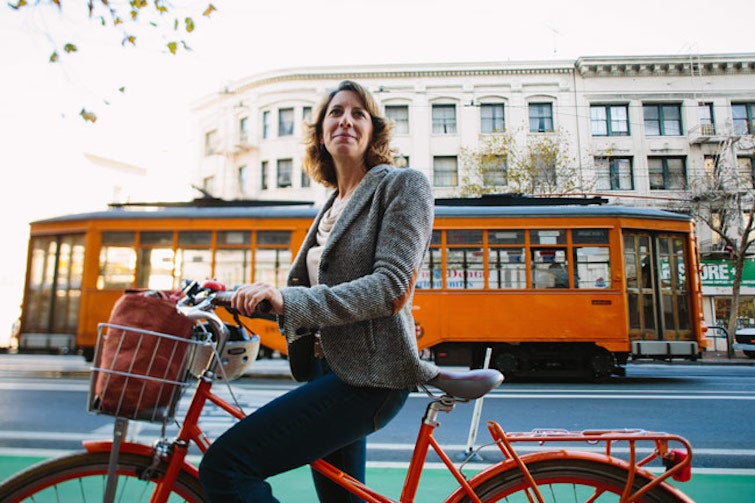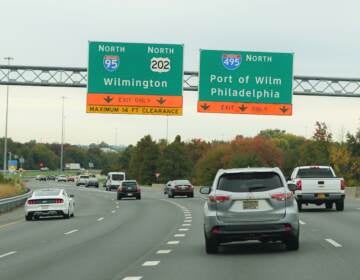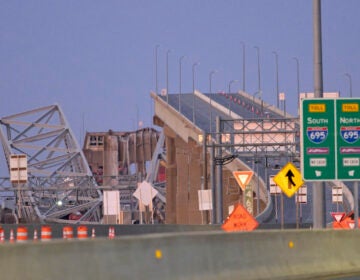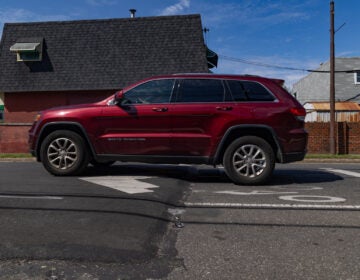Q&A: Leah Shahum of the Vision Zero Network on taking local street safety action national

Vision Zero—the no-excuses approach to street safety that’s been gathering steam in many of our peer cities—ended up punching above its weight as a political issue in this year’s mayoral campaign. Tomorrow, the Bicycle Coalition and Thomas Jefferson University are hosting a Vision Zero Conference to explore what a comprehensive street safety policy would look like here in Philadelphia.* Leah Shahum, Executive Director of the newly-formed national Vision Zero Network, and former director of the San Francisco Bicycle Coalition, will be in town to participate in the conference, and we connected with her earlier this week to get her take on the politics of Vision Zero and what she hopes to accomplish by networking Vision Zero cities.
PlanPhilly: Vision Zero in the U.S. context has been mostly a city-level phenomenon, although you now see the Federal Highway Administration and state DOTs taking up a similar cause with the Toward Zero Deaths campaign. Can you tell us a little about your background, and what made you want to start organizing nationally around this?
Leah Shahum: I started the Vision Zero Network earlier this year in the spring, so it’s very new. I was the Executive Director at the San Francisco Bicycle Coalition for just over 13 years, and worked on promoting bicycling for everyday transportation. And we, along with our colleagues at Walk San Francisco, were the ones who brought Vision Zero forward in San Francisco in 2014. We had become very frustrated with the lack of progress on biking and walking safety, and we were very impressed with what we were reading about in New York City, who really got out ahead of other US cities on this.
I’ve been really impressed at how strongly and quickly Vision Zero has taken hold, particularly at the local level, and I recognized that this was going to be a growing movement, so I started this organization to help communities learn about and support each other’s work. Every city is different, but the reality is that most of the things safety advocates are working on in all cities are pretty common.
One of our goals is just to advance the concept of Vision Zero and get it some attention. And secondarily, we’re creating a network of cities working toward Vision Zero. How do we learn from each other and avoid wasting a lot of time and expending a lot of energy and resources trying to reinvent the wheel? With a network, we can see what worked in Philly, what didn’t work in Chicago, and so on.
PP: Where is the Vision Zero Network’s funding coming from?
LS: We got funding from Kaiser Permanente, who became interested in this because they realized that their goal of trying to get people to be more active, and use active transportation, wasn’t going to be successful if people are scared of being on the streets.
PP: How is this effort different from what organizations like NACTO [National Association of City Transportation Officials] are doing to promote safer and more multi-modal street designs?
LS: NACTO does a great job of providing a forum for city transportation officials to exchange ideas, and we hope we can do the same with Vision Zero for other kinds of public officials.
Vision Zero engages other key stakeholders like police officers who are focused on traffic enforcement, and public health officials who are focused on data collection and analysis, as well as elected officials and community leaders.
We’ll be helping to coach and support local advocates, and supply them with the stories and information about what’s working well, and what’s not working so well. We can also provide outside experts to testify on best practices.
PP: What do you think is the most impactful part of a Vision Zero initiative?
LS: I know it sounds very vague and overwhelming, but the idea of culture change is really important. It’s a conversation that we haven’t had in America very robustly around the issue of street safety. So there’s a lot of work to do to start winning hearts and minds on this issue.
Injuries and deaths aren’t something we have to accept as an unfortunate cost of doing business in society. In fact, we have control over our streets, we have control over city policies, we certainly have control over things like speed limits. We can make changes that save people’s lives, and offer them greater mobility without fearing lack of safety.
PP: Here in Philly, our district Councilmembers are a lot more involved in street design issues than in some other places. Since 2012, any street design changes that remove a car travel lane or a lane of parking now require a Council ordinance. This made the politics of street design changes more similar to development politics under Philly’s councilmanic prerogative tradition, and it seems to be having the effect of kicking some of these traffic calming debates down to a much more local level. Have you seen examples of the Vision Zero message being able to transcend some of the narrow neighborhood-level politics, because that seems like it’s going to be the specific challenge in Philadelphia.
LS: In San Francisco, it’s been a mixed bag, but the politics are different. Bike lanes, road diets, and stuff like that usually doesn’t make it to the Board of Supervisors, our City Council, it’s happening at the SFMTA. You could say it takes the politics out of it a bit, and that’s sort of the case, but frankly as an advocate, sometimes it’s helpful to have the politics.
For better or for worse sometimes very important transportation and traffic safety issues end up becoming bogged down in a Not In My Backyard kind of pushback. And I think it’s become too common in many cities that safety projects can get watered down, or delayed, or worse, because of fear of change.
I think one way we are seeing Vision Zero address that challenge is by raising the conversation to the highest level. What Vision Zero can do is change the question to: What is the priority here? Are we taking a data-driven approach to safety, and choosing the safest options for everyone? We have to keep that focus even if some of the changes make people nervous. We can also test changes for a few weeks or months or years to see what works, to take away some of the nervousness.
Where we’ve seen San Francisco change, having Vision Zero as a priority and a framework for doing business has really increased the attention traffic safety has gotten from our Mayor’s office. It’s not so much that the politicians weren’t doing and saying the right things, as that it was all just moving painfully slowly. And now our Mayor and City Council members will stand up in front of groups of people and say these crashes are preventable, they are committed to reducing them, and safety is their first priority. And then advocates can point back to those commitments later when individual projects are facing resistance.
It also gives politicians cover and department leaders cover. They’re still going to get beat up verbally or debated when people are afraid of change. But they can point back to this higher need for safety, which is actually a higher political priority. It’s every elected official’s priority right? It’s their job to keep residents and visitors safe, so then we build everything off of that.
PP: Pedestrian crash statistics are a pretty potent tool for public education and advocacy purposes. I’ve noticed locally though that there’s no guarantee the Vision Zero interpretation of those statistics—that high-crash corridors need traffic calming and enforcement—will automatically be the takeaway. There have been a few instances here where the media would cover the same crash statistics, but then chalk the problem up to pedestrians being too distracted, or to motorists and cyclists having bad manners, while ignoring factors like over-engineered streets or lax traffic enforcement. The Nutter administration received a federal grant for a public awareness campaign about pedestrian injuries which utilized the same statistics, but had a distinctly pre-Vision Zero flavor that sort of ridiculed all street users equally, and rubbed some of the local Vision Zero supporters the wrong way. How do Vision Zero supporters reclaim the meaning of those statistics and steer the public conversation toward policy and design interventions?
LS: I haven’t seen that specific PSA, but from what you’re describing I can imagine it. You know we’ve had many debates at the local level over the years about what’s the right message for this. I think safety is the base, where we need to design the streets so they are encouraging safety.
I think we spend a lot of time and resources, with mixed success, around educating the general public on behavior, and I don’t want to say there’s no place for that, but I think the more important education efforts going forward will be educating policymakers, decision makers, media—the influencers in our society. If we spent even a fraction of our time and resources on educating those influencers, that would be a far greater pay-off than some billboards and PSAs. There is a place for general public education, but it’s very hard to measure, and hard to get it right.
PP: On that point, People for Bikes seems to have hit upon a good strategy to influence the influencers, where they take elected officials on junkets to Copenhagen with local transportation advocates to see some of these safe street designs up close—and of course have a nice little vacation in the process. As Sarah Goodyear wrote in Next City, elected officials tend to come back energized and enthusiastic about applying some of these ideas at home. [much like Gary Levitt, the Godfather of Open Streets PHL, did with the Walk on Walnut Street after returning from a vacation to Copenhagen – Ed.]
LS: It’s one of the things we’re thinking about with the Vision Zero network. We don’t have a fleshed out plan yet, but we’re looking at some of these programs, like how NACTO (National Association of City Transportation Officials) does these road shows, or People for Bikes has the trips to Copenhagen and the Netherlands. How do we do that with the Vision Zero lens? Moving beyond the planners, how are we helping police meet their peers in other cities, or City Councilmembers meet their peers? It helps to show people what the environment and cultural context is that reinforces those policy changes.
*PlanPhilly is a media partner for the Vision Zero Conference on December 3 – find out more or register.
WHYY is your source for fact-based, in-depth journalism and information. As a nonprofit organization, we rely on financial support from readers like you. Please give today.






